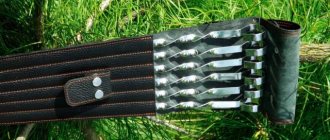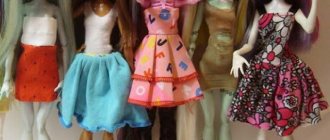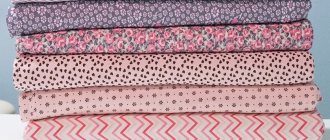We all love beautiful and functional gadgets, but the purchase of each of them entails the purchase of several more quite expensive accessories (despite the fact that they themselves are usually not cheap). One of these accessories is a case or case, the creation of which is the focus of our today’s master class. With a little creative ingenuity, you will get a truly exclusive item without spending a single ruble.
Let's start with a relatively simple and very interesting book case.
To work, you only need a book with a nice cover and a few additional materials:
- 2 zippers of suitable length
- 2 pieces of “smart sponge” - a thin synthetic material that can restore its shape
- Keeper tape
- Awl and scissors
- Thick thread and two needles, thin and thicker
- Hot glue adhesive
Measure the length, width and thickness of your device, add approximately 5mm to the first two, and select a book of the appropriate size. When choosing the width of the spine, do not forget that in addition to the tablet, there will also be sponges inside.
Sew the keeper tape to the zipper edging, but only on one side, as shown in the photo:
Cut a block of pages from a book, you only need its cover:
Make holes around the entire perimeter of the cover, stepping back from the edge by about 5 mm. The distance between the holes should be about 2-3 mm, so we recommend using a very thin awl.
Sew the zippers to the cover by threading the thread through the holes, starting from the spine of the book. They should converge in the center of the long side of the future case - this will make it more convenient for you to open it.
Sew the second halves of the zippers behind the keeper tape to the second “flap”, also starting from the spine. This will require some effort as the edges are joined together, but it is important to ensure that when you are finished the zippers can be zipped and unzipped properly and the tablet and sponges can fit freely inside the cover.
Cut out rectangles of the “smart sponge” of suitable size and glue them inside the cover, as shown in the photo - one layer on each side. Hot glue glue dries very quickly, so we recommend gluing it section by section rather than applying it to the entire surface at once.
As a result, you will get a case like this:
Master class: how to make a case yourself
If you're willing to tinker a little longer, a similar case can be made from a piece of cardboard lined with fabric:
The tablet will be securely fastened inside, and the clasp will be two matching ribbons (in the male version, this can be a ribbon with Velcro at the end). Materials and tools:
- Fabric with a pattern you like and ribbon or thin braid
- Cardboard box
- Sewing machine, scissors, ruler and pins
- Thread and needle or glue for hot gluing
- Elastic hair band
- Aerosol glue
Procedure:
Cut out three cardboard blanks: 2 of them should match the tablet in length and width, another 1 should match the thickness. Fold them as shown in the photo - this will make your further work easier. Place the tablet on the future cover, outline and cut out the rounded corners.
In the same sequence, place the blanks on the wrong side of the pre-ironed oblong piece of fabric. Outline each of the three parts of the future case using a pencil. Trim off the excess fabric, slightly away from the edges of the TOTAL perimeter (seam allowance). You will get a rectangle, inside of which the spine of the cover and two parts are outlined. Cut another identical rectangle from the remaining fabric.
Sew the two flaps to each other along the perimeter, wrong side out, rounding the corners in accordance with the markings. Leave a long gap in the center of its lower part, through which you can later insert cardboard blanks. Turn the finished cover right side out and iron it.
Through the hole left, insert cardboard blanks sprayed with aerosol glue into the case - right and left. Make sure that the fabric treated with glue is stretched onto the cardboard as far as it will go and does not wrinkle, carefully smooth both “flaps”.
The third, narrow piece of cardboard can be thrown away; it was needed to coordinate actions and you will no longer need it in your work.
Your cover is almost ready. Fold the unstitched edges of the fabric under and carefully secure with hot glue. Glue on ribbon ties (we sewed them from the same fabric as the cover).
To keep your tablet securely in the case, you need to glue loops of tape to the inside of the cover. This is done as follows:
Open the cover like a book. Secure one end of the tape to the top left corner of the right sash. With the tablet centered, determine where the other end of the loop should be attached so that it grips the corner of the device diagonally. Holding the tape with your finger, remove the tablet and stick it at the desired point. Do the same in the lower right corner.
The hinges should be tight enough to tightly grip the corners of the gadget, but loose enough so that it can be easily inserted or pulled out of them.
To hide the ends of the loops, cut a rectangle of fabric the same color as the cover and carefully glue it on top.
This fastening is quite reliable, but just in case, we also tied the finished case with a hair elastic.
The most popular types of materials for covers
What types of cases are there and what are they made of? Anyone can choose the material to suit their taste and budget. Cases made from rare materials can be very expensive.
Genuine Leather.
Tablet case made of genuine leather
If you are not an animal activist, then a case made of this material will be an excellent choice. Leather has high wear resistance, strength, durability, has good protective properties and boasts a wide variety of patterns.
It may vary in origin and manufacture. This category also includes nubuck and natural suede. They are absolutely not inferior to leather in terms of wear resistance. Cases made from these natural materials are much more expensive, but have a very beautiful appearance.
Textile.
Fabric poanchette case
There are a huge number of types of fabrics from which tablet cases are made. Both natural and synthetic fabrics are used to produce covers.
Natural fabrics have less wear resistance and do not repel moisture well
When choosing a cover made of cotton or linen, you need to pay special attention to the coverage and density. Good coverage and high density will significantly extend the life of the case.
If you are not going to change the cover often, then it is better to choose an accessory made of synthetic fabric. Synthetic fabrics are characterized by high strength and abrasion resistance, color stability under the influence of sunlight. A cover made of synthetic fabric retains its good appearance for a long time, is inexpensive and unpretentious to use.
Faux leather.
PU Leather Tablet Case
Today it can be difficult to distinguish artificial leather from natural leather, thanks to the success of manufacturers. They have learned to copy well the properties of natural leather and even the pattern.
The cheapest models of faux leather tablet cases are made from polyvinyl chloride (PVC). This is not the best option. PVC leather has a strong, unpleasant chemical odor and does not tolerate temperature changes well. In addition, it is not very environmentally friendly.
You should only choose a PVC leather case if you really want to save money. More advanced artificial leather is made from polyurethane (eco leather). Eco-leather is elastic and wear-resistant, does not contain harmful impurities and has no unpleasant odor.
The price of eco-leather covers can vary significantly (depending on the properties), but such a cover will still cost you much less than a genuine leather cover.
Silicone.
Silicone tablet case
Silicone cases are easy to use, but will not please you with their original design. Although the cases are made of fairly thick silicone, they do not fully guarantee the protection of your tablet in case of a fall. Silicone cases do not have a rigid base and can only protect the tablet well from chips and scratches.
Such cases fit well in the hands, the material is absolutely non-slip, so the tablet will not slip out of your hands. The silicone case is easy to put on and take off from the tablet, but there are no universal silicone cases.
Latest posts 7 films that inspire you to live by your own rulesStylish outfits of Soviet film heroines that you can safely wear nowBiographical films whose actors managed to perfectly impersonate their characters
Each tablet model has its own original case. Silicone cases also have several disadvantages:
- there is a high probability of tearing the cover when putting it on or taking it off;
- possible unpleasant chemical odor;
- get dirty quickly.
Despite these disadvantages, silicone cases are quite popular due to their modest price and ease of use.
Plastic.
Plastic tablet case.
Plastic cases are the cheapest. They are made in the form of a bumper or back cover. The range of plastic cases is quite wide.
Models differ in composition, pattern and color of the material, as well as in the type of coating - matte, glossy, soft touch.
Plastic cases protect the tablet well from scratches, chips and splashes, but they will not provide protection in the event of an impact or fall.
Master class: making your own iPad case
Another project involves the most seemingly unexpected base - an envelope for parcels with bubble wrap inside, and in addition to it:
- A piece of fabric you like
- Hot glue, glue stick, stapler, or small sewing pins
- 2 buttons
- Thread and needle
- Thin ribbon or lace
- Scissors
Step-by-step instruction:
Remove the bubble wrap from the envelope, you only need a thick base. Place the tablet across it to measure the appropriate depth of the case.
Cut the envelope at the desired height so that its back wall is several centimeters longer than the front - it will serve as the hinged lid of the case.
Cover the inside of the envelope with fabric, then do the same with the outside of the envelope, including the lid.
Sew one button onto the lid and the other onto the body of the envelope. Now your case can be closed by wrapping a string or ribbon around them.
Get creative
Create original solutions
Don't be afraid to improvise! Don’t forget that you are doing all this exclusively for yourself, and therefore no one can stop you from adding your own original ideas to the standard process. For example, by using foam rubber in the inside of the tablet, you can ensure that your case is also shock-resistant.
Feel free to decorate your case the way you want, use any items and decorations available for this purpose. Among other things, you can sew something in the style of a clutch handbag, just don’t forget to take into account the dimensions of your touch device. In this case, you can take virtually any fabric - when creating an accessory for yourself, no one can forbid you from experimenting with a wide variety of fabrics and materials.
Features of fasteners
Choose the right fastener type
As for the fasteners, you can make them in a variety of different ways, and if for some reason you don’t like Velcro, then you can think about it in advance, and already at the first stage of sewing the case, glue magnets into the base of your future case, in general , it all depends solely on your imagination and resourcefulness.
So, when creating this accessory, improvise! Of course, many will say that it is easier to buy a ready-made case in a store, but, in any case, a thing created with your own hands will help you save money on something else (which you cannot do yourself)
In addition, your case will attract attention, and you will undoubtedly be able to be proud of the fact that no one else in the world has the exact same case as yours. This is an idea for creative people seeking to create extraordinary solutions
Develop your own capabilities in terms of creating unusual things, and never stop there!
Leather tablet case
And finally, here's a sample suede pouch that's perfect for those who prefer a more formal style, or those who don't want the hassle of gluing and finishing the edges. It will take you about 15 minutes to make.
Stock up on a piece of thin suede, a pencil, paper, a ruler, a sewing machine and threads to match the fabric. Draw a pattern on paper according to the following pattern:
The black lines are the cut lines, the red dotted lines are the seams (only one is marked in the figure, but, as you understand, both sides need to be stitched), the red arrow is the direction of the fold.
A long ribbon-tie also needs to be cut out of suede, then one end of it must be threaded through two small slits on the lid of the case and sewn in the form of a loop so that the seam is not visible from the outside. You can close the case by wrapping a ribbon around it and tying it at the base.
Preparing parts for the future tablet case
She took out a block of sheets from an old notebook. I ripped the seams of the cover apart and took it apart. On its cardboard (inner) side I outlined the tablet and cut out two parts according to its shape. One of them will serve as a folding support, so I cut it in half lengthwise.
From the upper (faux leather) part of the cover, using existing cardboard patterns, I cut out parts with an allowance of 1 cm (photo 1). I made a hole in the blank for the tablet camera (photo 2)
I glued a foam backing onto the leatherette parts, and cardboard elements of the appropriate size on top. I folded the leatherette allowances onto the inside of the blanks (photo3)
To decorate the inside of the case, I cut out three parts from white cardboard, which are 0.2 mm smaller around the perimeter than the top ones. Fitted
Related link: DIY office chair cover (photos + diagrams)
Manufacturing process
Many users, not having felt at home and not knowing where to get it, immediately give up creating a cover.
Please note that felt can be replaced with any other fabric, even leather/leatherette is suitable here!
Don't give up, almost any fabric will do for this purpose. Use what you have on hand.
Gluing cardboard to fabric
First, glue the material you took with the pieces of cardboard, then make sure that there is some space left between the cardboard pieces. Before the glue hardens, check this; the distance is necessary, first of all, so that the cover can be closed. In other words, at this stage you should end up with something like a book.
Homemade protective accessory for your tablet
Working on the inside
Next you will need to take the edges that are peeking out and fold them inward. Glue them to the cardboard, then check that everything is glued securely enough.
Carefully glue the corners
The next step is gluing the leather strips to the bottom. Their dimensions should be as follows: 15 cm in length; 1 cm in width. Two such strips must be carefully divided into two parts with scissors, and then glued with glue to the corners of the protective accessory being created.
At this stage, it is imperative to check whether your tablet fits in the case or not. If everything is fine, glue two fixation elastic bands in the way that is most convenient for you. We cut out another piece of fabric (leather), then glue it into the inside, so that the uncovered cardboard is completely hidden from view. In the end, of course, you need to stitch everything, because the glue can easily come off at the most inopportune moment.
All that's left is to hide the cardboard
Case clasp
The most interesting moment in creating a case is its clasp. We take Velcro, as well as a piece of leather/fabric. Now you need to glue it all in such a way that there is Velcro on one side and fabric on the other. Be sure to sew it all (for the fastening element, you need to sew it especially securely and efficiently).
Velcro
Final work
Turn the product inside out through the ten-centimeter hole that we previously left in the lining, and then sew it up. You can do this by hand or stitch on a sewing machine. Sew a snap on the tongue or make a loop yourself, and then attach a decorative button over it.
Making a tablet case like this will help you gain some sewing skills. If you enjoy this activity, it is best to start with small, simple projects and gradually move on, practicing and developing your skill.
In addition, the presented version of the product can be improved based on personal requirements and made it more suitable for you. You may not make a pocket or make several on different sides of the cover. You can also come up with other fastener options. In any case, the tablet case you create yourself will be a special and original product.
Found a violation? Report content
Pros and cons of all methods
| Technology | Advantages | Flaws |
| Old case | Easy to do it yourself, affordable consumables. | Not suitable for cases with cracks or major damage. |
| Hot glue | Convenient, fast. To create a case with your own hands, you do not need to have the talent of an artist. | You need to buy a heat gun and glue. |
| From cardboard | A budget option | Short-lived |
| From paper | Many original collection schemes. | Unreliable material, it breaks in a pocket, bag and under the influence of moisture. |
| Case book | The model's characteristics are not inferior to accessories from the store. | To create a case with your own hands, you need the accuracy and perseverance of the performer. |
| From a balloon | A budget solution will protect against moisture. | Unpresentable appearance. |
| From felt | Soft case, many decoration options. | Sewing skills required. |
| From fabric | Practical, convenient case. | You must know how to sew and have a sewing machine. |
| Leather | Presentable appearance, durability of the case. | Complex models cannot be made without shoemaking skills. |
| Knitted | Created both using a crochet hook and knitting needles. Lots of designs and decor options. | Minimal technical skills required. |
| From beads | A beautiful, durable accessory. | Tools and DIY weaving skills are required. If you weave the beads incorrectly, the decor will damage the glass and the body of the gadget. |
| From rubber bands | Soft, thick case. | You need tools and skills in knitting techniques. |
Popular articles Cool congratulations on April 1











